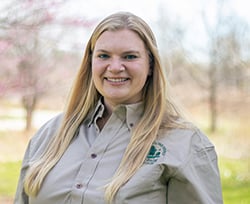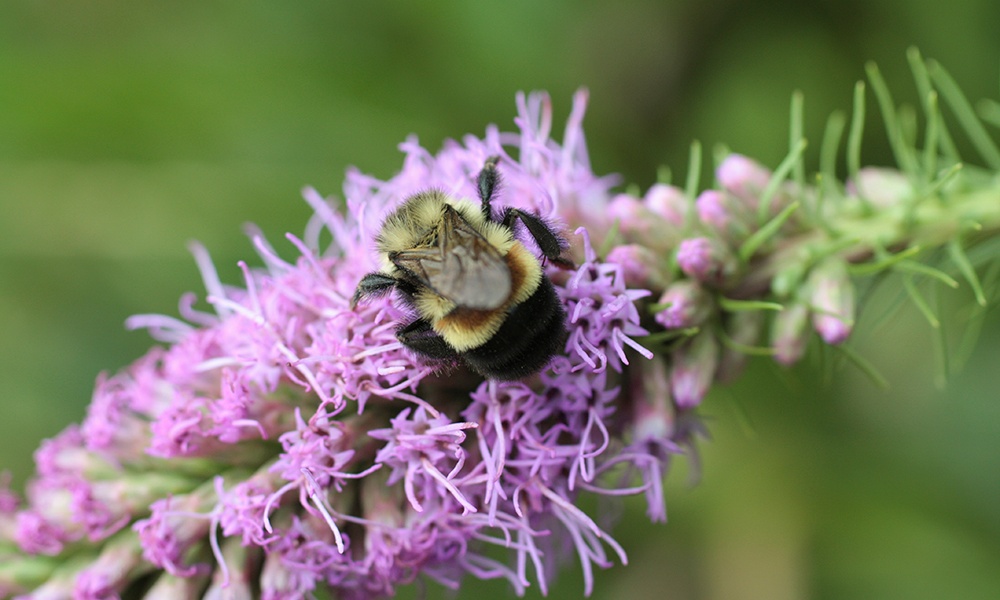
Did you know Illinois is home to more than 500 species of native bees?
During a 24-hour bioblitz of 4 DuPage forest preserves in 2015, 14 different groups of bees and wasps were found, including many different species within these groups. Bumble bees and honey bees are probably the most recognizable of the bees.
While honey bees are great insects that pollinate crops and make delicious honey for us to consume, did you know they aren't native to North America? This blog will focus on Illinois native bees, bumble bees, how to attract them to your yard and how to tell the difference between a wasp and a bee.
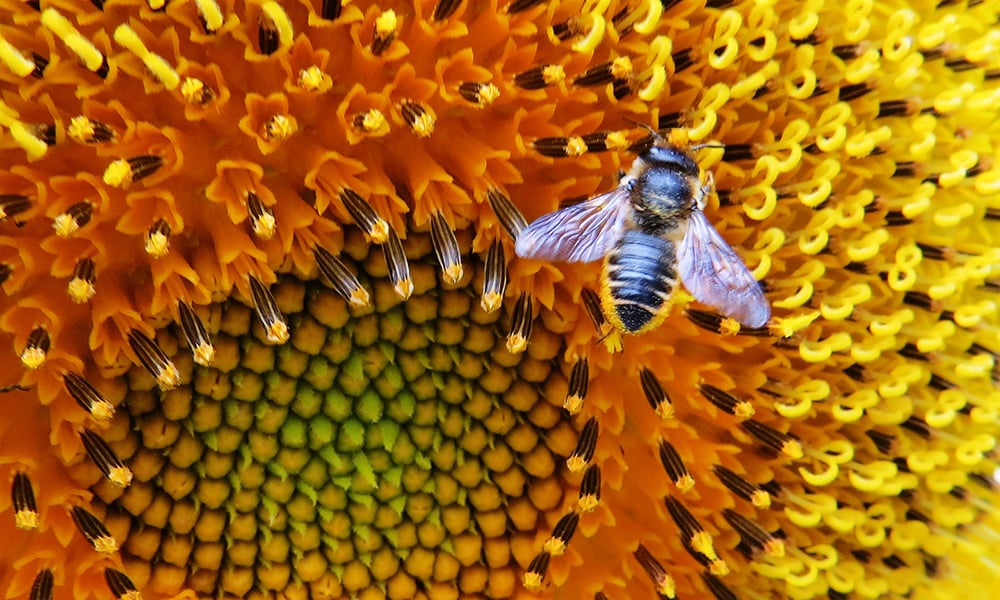
Native bees are much better pollinators than honey bees. One native mason bee can do the pollinating of 100 honey bees. Pictured is a leafcutter bee.
The Buzz on Bees
Illinois’ native bees are made up of spectacularly colored and patterned creatures. Some are metallic blue or green and many are not the typical yellow and black-banded bees we typically think of. Native bees can range from a few millimeters in size to over an inch like bumble or carpenter bees.
Many native Illinois bees are solitary and do not live in big groups. These types of bees are commonly known as digger, leaf-cutter, carpenter, or mason bees, but different bee species are largely known by their scientific names. For example, carpenter bees are bumble bee look-a-likes commonly seen in spring near dried wood. They are just as common as other bumble bees in spring and summer.
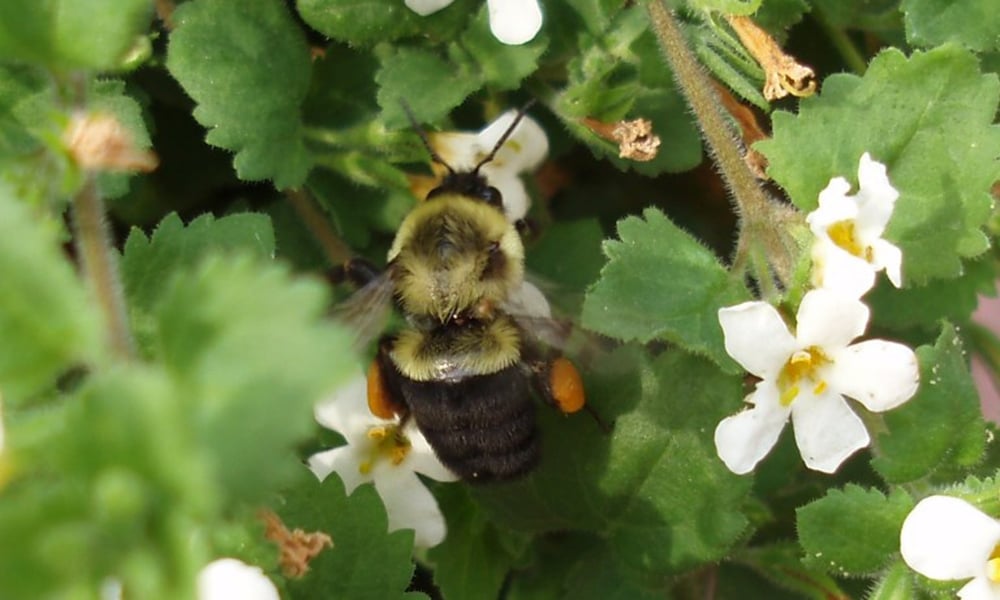
Common eastern bumble bee (Bombus impatiens)
Causing a Buzz in Your Yard
Attracting native bees and bumble bees to your yard doesn’t take much work. Growing native flowering plants is a great way to attract native pollinators to you yard. Some native bees need bare soil to make their nests in. Leaving a part of your yard with bare, untilled soil creates easy habitat for these types of bees.
During spring garden cleanup, leave 12 – 15 inches of hollowed stems standing in your garden. Some bees need this type of habitat to nest in. Once the plant begins to grow in the spring and summer, you won’t even notice the few stems still standing.
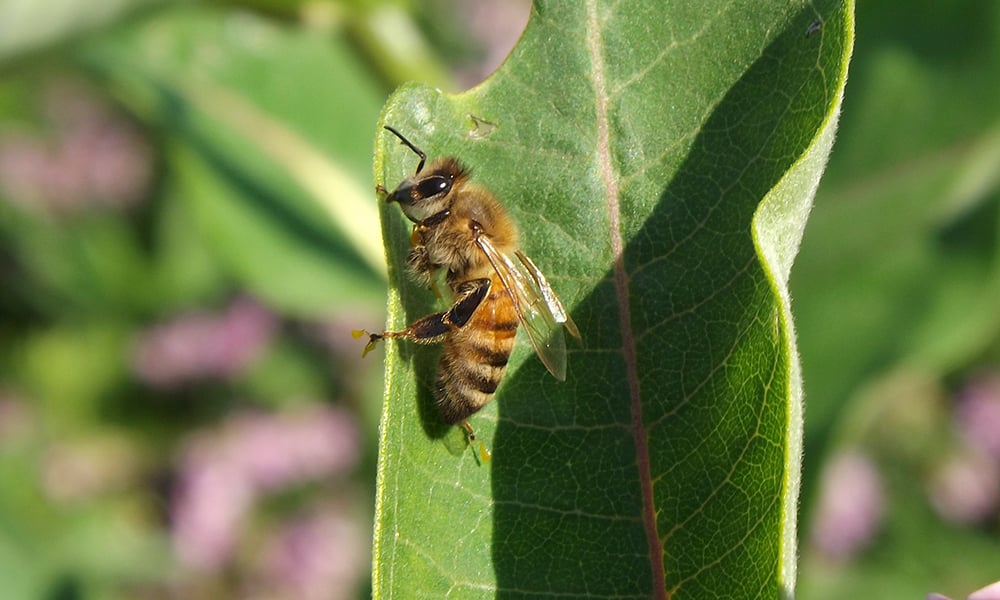
Only female bees have stingers. Many of the native bees are not aggressive and won’t sting unless accidentally stepped on. This common western honey bee (Apis mellifera) was found at Danada Forest Preserve during the 2015 bioblitz. (Photo by Gerald Davidson)
Bees tend to get a bad reputation because they are related to and closely resemble wasps and hornets. Some wasps and hornets can be extremely defensive, aggressive and downright cranky. These are the ones that you have to be more respectful of their space or else they may sting you. Yellow jackets are the unwelcome wasp visitors to your picnic who buzz around your food that many people mistake for bees. While no wasps or bees are bad and all have their place, it doesn’t mean we have to like them all.
How do you tell the difference between a wasp and a bee? It's not always easy to tell the difference between a wasp and a bee. Generally speaking, bees are more robust and hairy while wasps are more slender and sleek looking. Bees have hairs on their legs where they collect pollen that can look like yellow balls or pants on their legs, sometimes referred to as “pollen pants.” Wasps do not carry pollen on their legs.
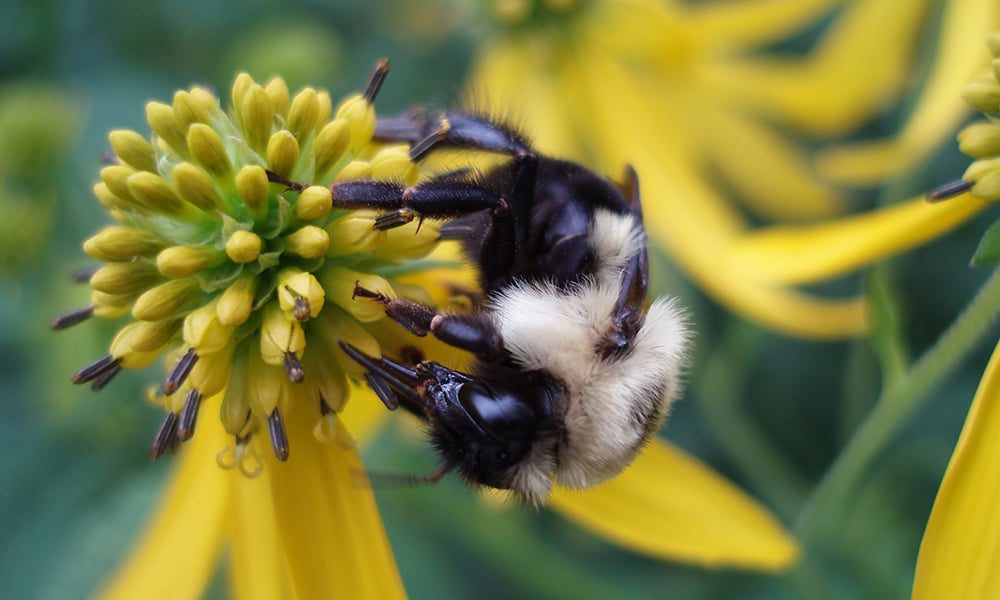
Common eastern bumble bee (Bombus impatiens) (Photo by Carl Strang)
Keriann Dubina
